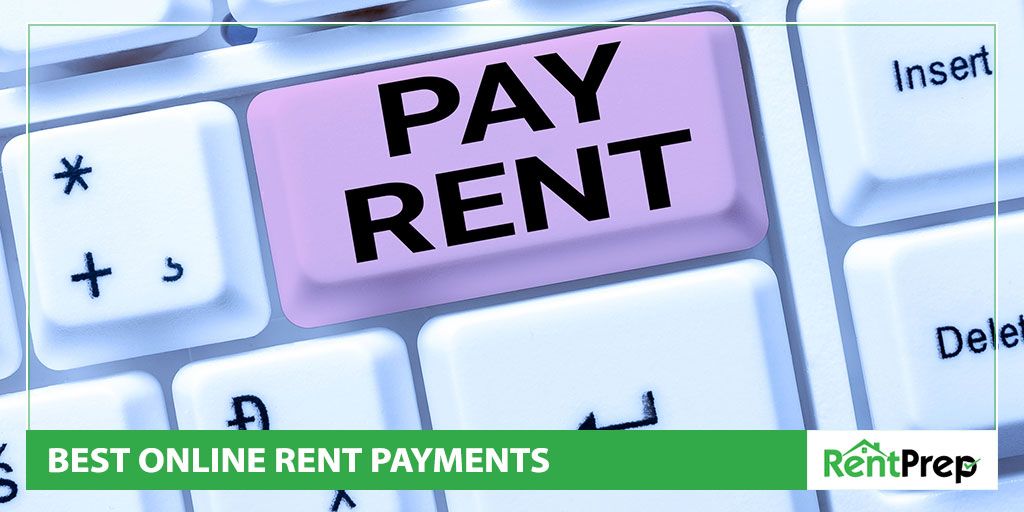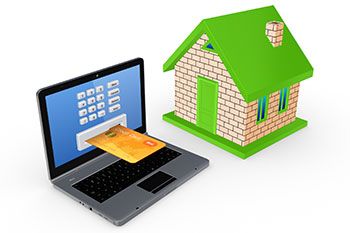
Collecting rent is central to your business and success as a landlord. What if you could be doing this with more efficiency and effectiveness?
Rent collection doesn’t have to be a tedious task, and tracking the payments collected doesn’t need to take up much time. Instead, you could be saving time, money, and your sanity by simply using a better tool. The best way to overhaul your management systems is to utilize tools specifically designed for landlords like you, and rent collection tools fill that need perfectly.
Online rent payments are best collected with ease and low fees, but not every payment platform has these features.
Which services should landlords explore? Today, we’ll discuss the top online rent payment services and what they offer you as a landlord.
3 Common Ways to Collect Rent Online from Your Tenants
Before we get into the specifics of which online rent payment options are suitable for you, learn about the types of online rent payment systems available. Landlords frequently utilize three major options.
#1: General Digital Payment Methods

The first option many landlords choose to use are digital wallets. These online wallets, such as PayPal and Venmo, allow people to send money to another individual or a business. Tenants can use these services to send rent directly to their landlord’s business account.
Landlords often choose this simple payment method because tenants are already familiar with it, and they also don’t need to put a lot of time into setting up the wallets. This makes the process simple for everyone.
However, these payment methods are not specialized in any way for landlords. There is no way to charge rent or late fees automatically, nor is there a way to prevent tenants from sending partial rent payments. These things can be problems depending on your tenants and your portfolio, so keep that in mind as you choose which service to use.
#2: Rent Collection Software
The next online option is rent collection software. It focuses on collecting rent and has several tools for doing so. Tenants can see their rent due and when they need to send payment. Landlords can send reminders and late fees.
Rent collection software is helpful because it is a slightly more specialized digital wallet. However, tenants might be uneasy using services they are unfamiliar with at first. Thankfully, this learning curve can usually be overcome with ease.
#3: Property Management Software
Lastly, a lot of landlords often end up using property management software. Property management software tends to be more comprehensive than rental collection software. Property management functions can be handled through the software, from maintenance requests to lease updates, making it an excellent resource for busy landlords. They can also be great to use with your property management team.
Property management services come in various forms to fit different landlord management styles and tenant needs. Most of the top online rent payment services are property management services, thanks to the large number of features that make a genuine difference to landlords.
The Best Online Rent Collection Services
The best online rent payment services for landlords are often property management tools that include rent payment collection options. This is because the features can be scaled according to your needs. These services typically don’t require landlords to utilize all of their features, but you can increase what you use as your business grows.
Here are some of the top services that can help you learn how to accept rent payments online with ease and security:
#1: Avail
Avail, a subsidiary of Realtor.com, is a prevalent property management software that many landlords use to collect rent payments. The service has user-friendly tools, from tenant applications and screening to rent collection, so it’s possible to scale this service to suit your business needs.
Avail offers a free plan that you can use to get a feel for how it works, but the tools at the free level are minimal. Most landlords will need to pay a monthly fee to find Avail helpful. These fees are per unit, so your budget will need to incorporate this.
Avail is well-known for having great software that works with completeness and consistency. From advertising to rent collection, landlords can do it all on Avail. If you’re looking for a start-to-finish solution, Avail may be the right rent collection service for you.
#2: PayRent
If you’re on the flip side of landlord management, you may prefer a more straightforward solution like PayRent. While a few features go beyond collecting rent payments, most are related to this primary purpose.
This focus keeps the program simple and accessible for landlords who don’t want to involve software or online management in more than just rent collection. Landlords with tried-and-true management systems can do rent collection online with PayRent without being overwhelmed by other features.
#3: Hemlane
Do you find yourself attracted to PayRent and other parts of Avail? Meet Hemlane. Hemlane is a hybrid property management tool. Landlords who want to mix DIY property management with intelligent online management will find it very appealing.
Many rent payment platforms want to provide complete services. Even if they are not required, though, it can be confusing to understand how to quickly skip the parts you don’t want.
With Hemlane, the approach is more about building up what you need instead of taking away what you don’t. This is very user-friendly, and the rent payment options are easy to work with.
#4: Appfolio
If you have more than 100 units, Appfolio might be the right payment solution for your business. This large-scale service is intended to make your portfolio simple to monitor and profit from.
The straightforward user interface includes smart payment collection, bill tracking, and automated late payments. Having a smart system to help keep finances on track is vital when managing that many units. Appfolio also includes the ability to manage security deposits, genuinely making it easier to keep your finances in line as a landlord.
#5: PayPal
PayPal is the most straightforward payment service for businesses because there are clear rules and regulations for companies, as well as business-specific accounts, on the site. This makes it simple for landlords to create a business account for rent collection.
There are no send limits on PayPal, and tenants can fund their payments through bank accounts, credit cards, or PayPal balances. These aspects make it simple for tenants to fund and send their rent.
PayPal is also very familiar to people, so many tenants will feel comfortable working within the parameters of the site to make their rent payments.
Like other general payment services, PayPal does not have specific features for landlords, nor is it possible to block any incoming payments. This can make eviction complicated as tenants can send money at any time, even if you have decided to evict them for nonpayment of rent.
Using PayPal will incur business fees, and these fees can change. These fees will decrease your profit from the monthly rent sent to you on the platform.
#6: Venmo
Venmo is another payment service with more limited features than PayPal, but one that focuses on transferring money from one person to another. PayPal owns this company, so there is some similarity in how their features are structured.
On Venmo, money can be sent from one user to another from a bank account, debit card, credit card, or Venmo balance. Money received will go into your Venmo balance, where it will remain until you send the money to another person or transfer it to your bank account.
Venmo is quick and easy to use. After setting up and verifying your account, money can be sent almost immediately. Additionally, it is easy for bills to be split between multiple people, so tenants sharing rent can easily use Venmo to pay their portion.
Many tenants, especially younger tenants, will already be familiar with Venmo, which is a plus. They will likely already know about its features and how to use the app. Tenants who aren’t familiar with Venmo yet will appreciate that the app doesn’t charge fees to transfer funds to and from your bank, so your tenants will likewise not be charged any fees to pay their rent.
However, as with any service, there are some cons to using Venmo for rent payments. Landlords should be aware that there is a base fee, around 2%, for business transactions on the app. There are also fees for instant withdrawals and check deposits if you need to use these features. The cost is similar to what is seen on other payment services, but many landlords are accustomed to cash or check payments and no fees.
One of the bigger cons of Venmo for landlords is that there is no way to manage payments specifically for rent. If a tenant sends rent after an eviction notice is sent or sends a partial payment, there is no way to decline this payment. This could lead to issues in eviction cases where the case may be halted due to partial payment.
#7: Zelle
Like Venmo, Zelle is another person-to-person payment app focused on individual transfers. It is less popular with landlords due to confusing and unclear rules about business transactions, but some small landlords still choose to use this payment app.
When sending money via Zelle, funds are sent directly from one bank account to another. You don’t need the bank account information of either party and can instead designate where the money is sent via a phone number or email address.
It’s free to send and receive payments on Zelle. It’s also effortless to do so thanks to the high number of integrations available with banking apps. All it takes are a few simple registration questions to get set up.
Additionally, Zelle is very secure due to the fact that your information is not stored or shared. All you need is a phone number or email address of the recipient, and then you can send a payment. Neither party shares nor sees more information than that.
Zelle has several big drawbacks for landlords. In addition to only working with US banks, it can only be used when linked to a bank account. Tenants who may need to pay with a credit card or debit card without direct linking will find this difficult to work with.
Additionally, some users have send limits as low as $500 per week. The limit depends on your bank and what agreements they have in place with Zelle, so it can vary. This may cause Zelle not to be an option for you and your tenants.
Finally, your bank may not offer Zelle for your business account. If your bank doesn’t have Zelle for business, you may not be able to use it for rent payments due to the complicated rules surrounding business and commercial use.
Choosing The Right Tool to Collect Rent

What factors are essential to consider when deciding which online rental payment service to use?
What matters most will vary from landlord to landlord, but the categories you should review are the same. Take some time to work through each of these to determine which will be priorities for you when collecting online rent payments.
Total Fees
How much does the service charge, and how much is in your business’s budget at this time? Consider if fees will take away from profitability or if they will contribute to your business success.
Usability
Those who are tech-savvy will find online services more accessible to learn than those who aren’t familiar with this type of technology. Consider your learning curve and what kind of customer support each service offers.
Number Of Units
Simple digital wallets like PayPal and Zelle may have enough functionality for digital rent collection if you’re managing just a few properties. However, those with more units may find that added landlord-specific tools are essential. If you have a lot of properties, seek out property management tools that include rent payment options.
Your Location
If you are located far away from your rental properties, using a rent collection platform is an excellent choice because you cannot stop by and pick up the rent as readily. This should be a factor in choosing whether or not to use online rent payment services.
Management Style
Finally, think about your management style. If reaching out to tenants about late rent, where rent needs to be sent, and other matters isn’t something you enjoy spending much time on, maybe it’s time to rearrange things. Different platforms require different levels of interaction. No one option is more correct than another, but you should consider your management style when choosing third-party partner services.
Before Rent Collection: Choosing The Right Tenant
Before you can even think about collecting rent, you need to think about how to make sure that you select the right tenants for your rental properties. Choosing renters is a complex process that requires a great system.
One of the biggest things you can do to help yourself as a landlord is to review and improve your tenant selection process. Make sure that your method includes high-quality tenant screening. Tenant screening allows you to ensure that applicants are honest and qualified to be tenants.
Supplementing your tenant screening practices with screening services from RentPrep is just one way to improve your process. Our tenant screening offerings help landlords like you run background checks and otherwise verify the applications of all potential tenants. Learn more about our services and get started with RentPrep today!
FAQs: Online Rental Collection Services
Deciding what the best online payment service is for rentals can be tough. Here are the top questions regarding payment apps.
What is the safest way to collect rent online?
The key to collecting rent safely online is to ensure that you are connecting with tenants over verified services that allow rent collection. Payment services like PayPal and Venmo have options that landlords can use, and there are also transfer services like Zelle.
You can also safely use accredited property management software, such as those services covered above, to collect online rent payments. You want to be sure that you only use verified sites and secure payment collection. This can be done by reviewing their policies and checking reviews from other landlords.
Is it safe to collect rent on Zelle or Venmo?
Zelle and Venmo are safe payment transfer services that you can use to collect rent payments from tenants. While these services are not specialized for landlords, they are simple options to use when starting out or managing only a few properties.
However, these services can be hard to scale if you continue to grow your business. They do not offer many features that landlords can customize to fit their needs, and there isn’t a way to set up automated payments. Still, these services are safe for money transfer purposes.
Can I collect rent through PayPal?
As long as you are following the latest terms and conditions on using PayPal as a business, you can collect rent on the platform. However, it’s important to remember that you cannot use the Friends and Family option. There are no special features for landlords that you may need, such as recurring payments or blocking partial payments.
Instead, it’s better to utilize one of the best online payment services. These provide all the features landlords need to collect rent online safely — and more.
Are online rent payments reported to the IRS?
The number of rent payments sent through digital wallets and similar online services will determine whether or not tax forms are generated. If more than $600 is collected in the fiscal year, a 1099-K or 1099-misc form will be sent out. These forms are also sent to the IRS, so those payments are on record.

